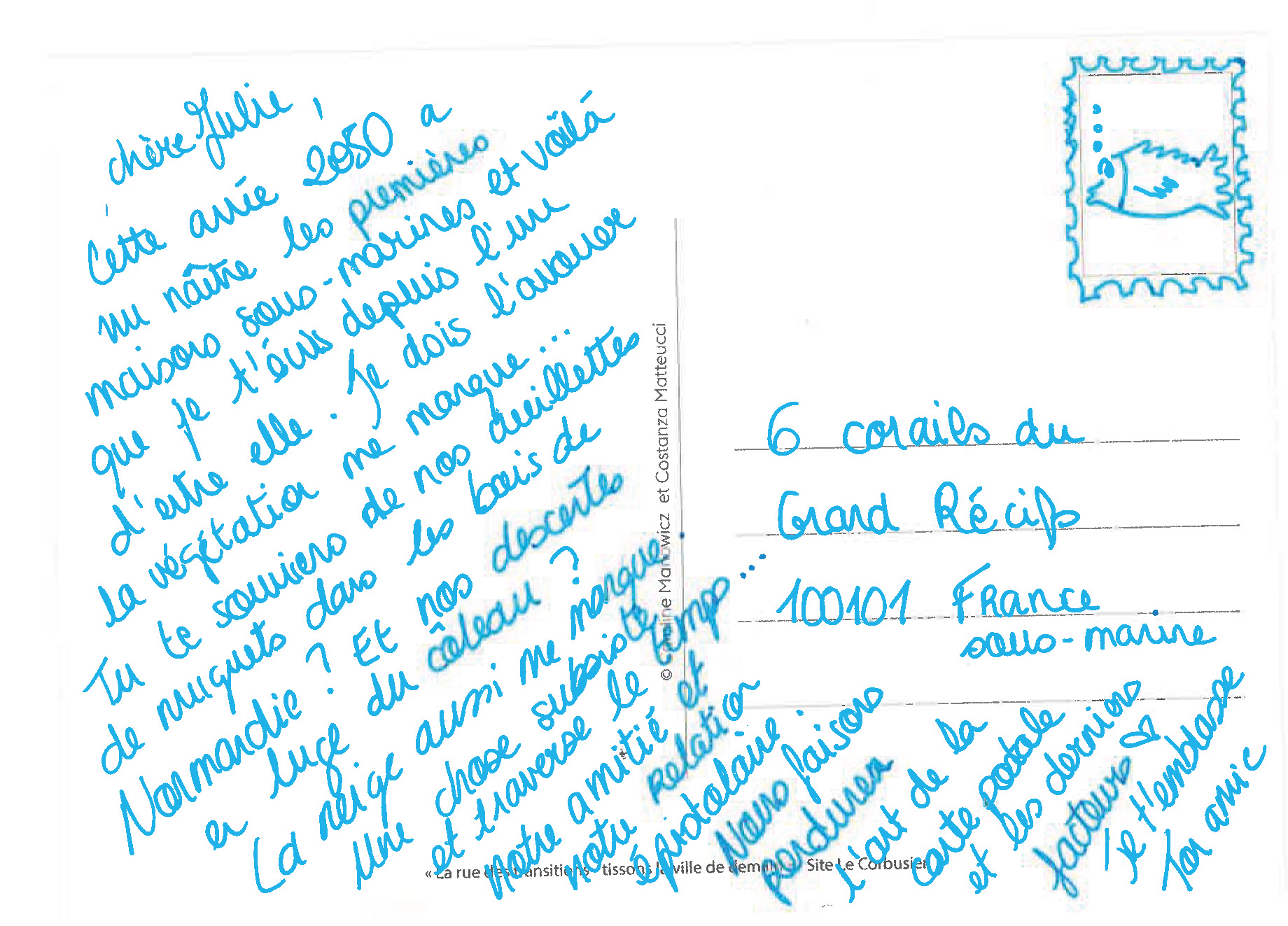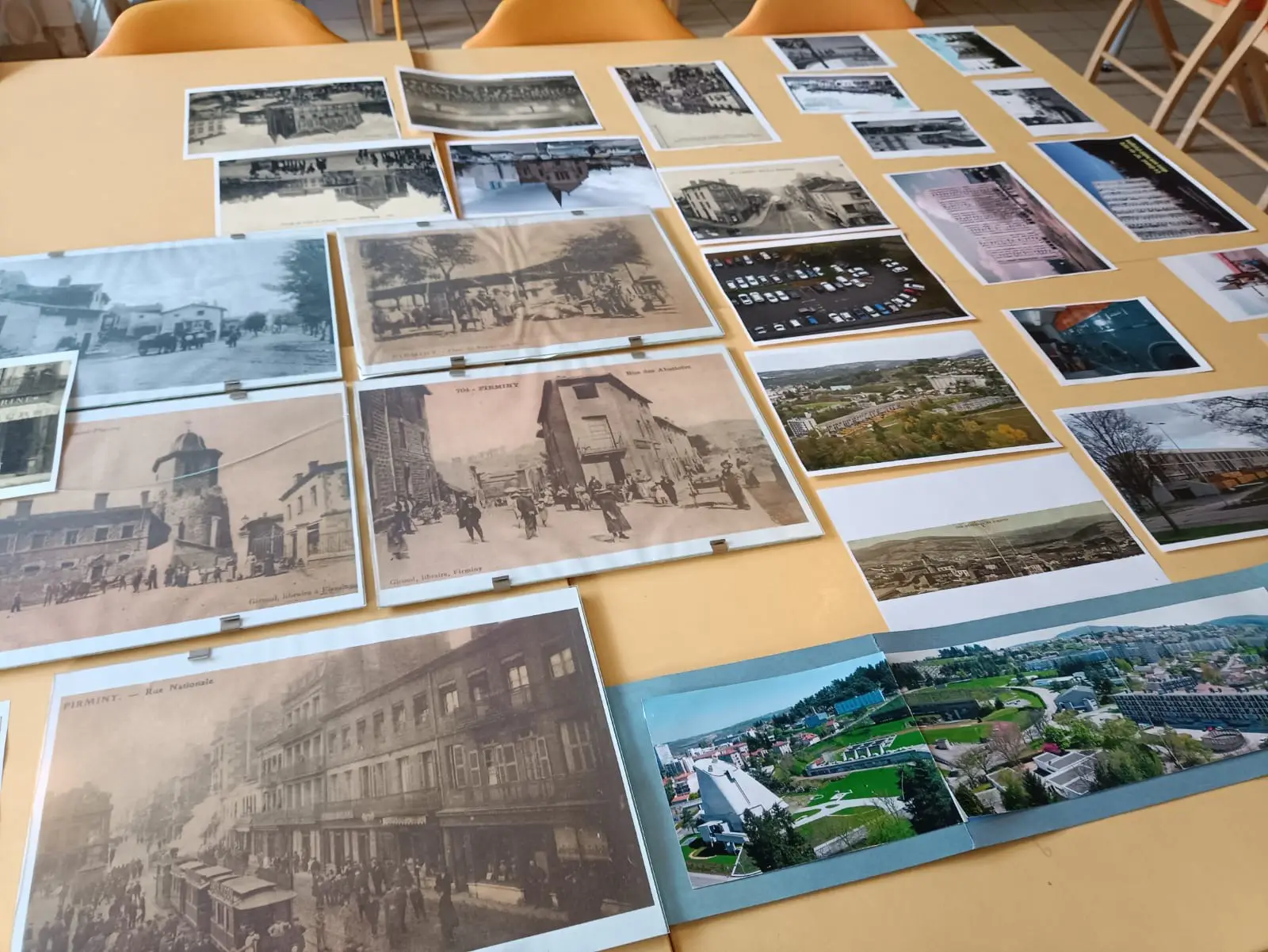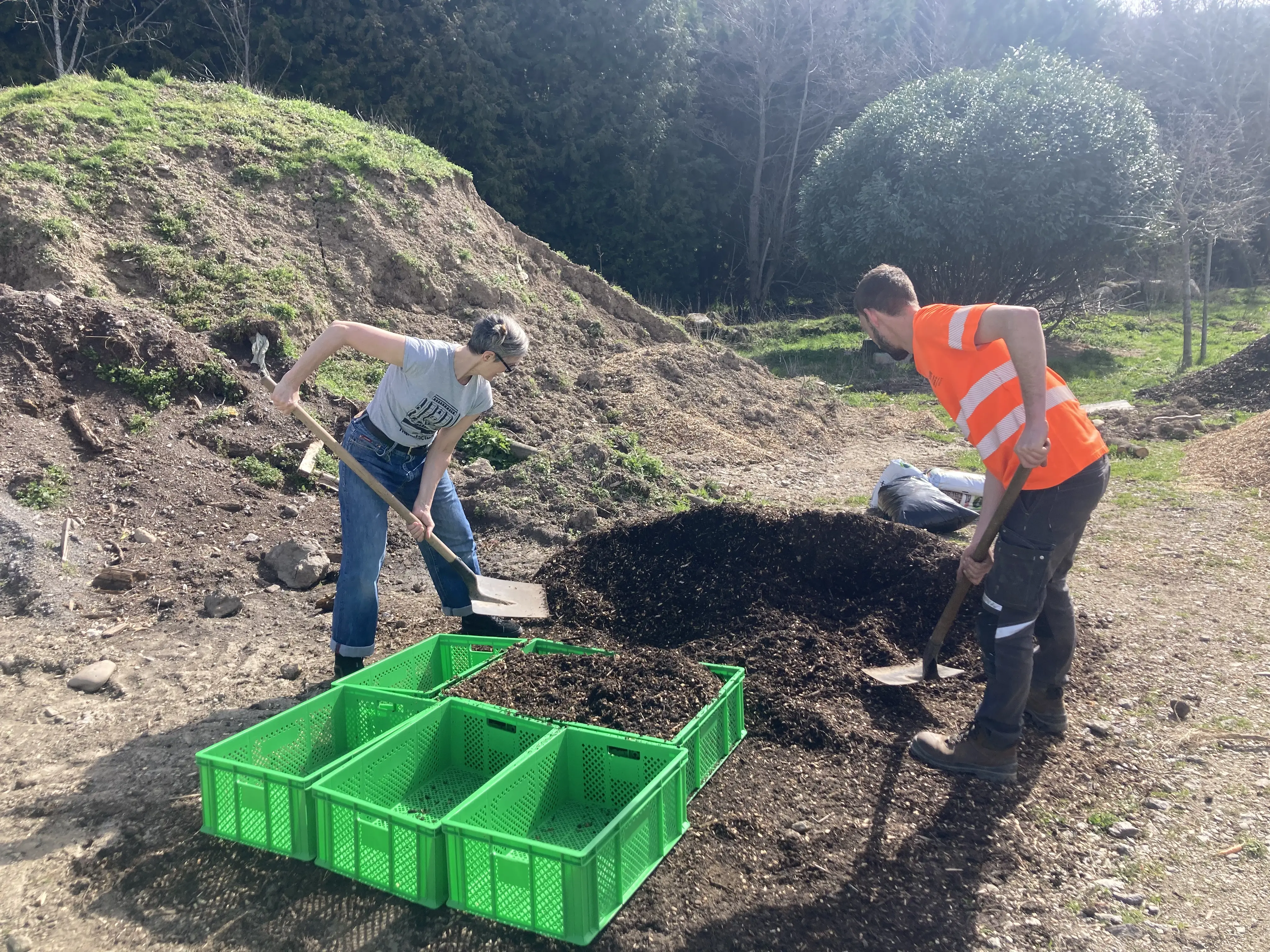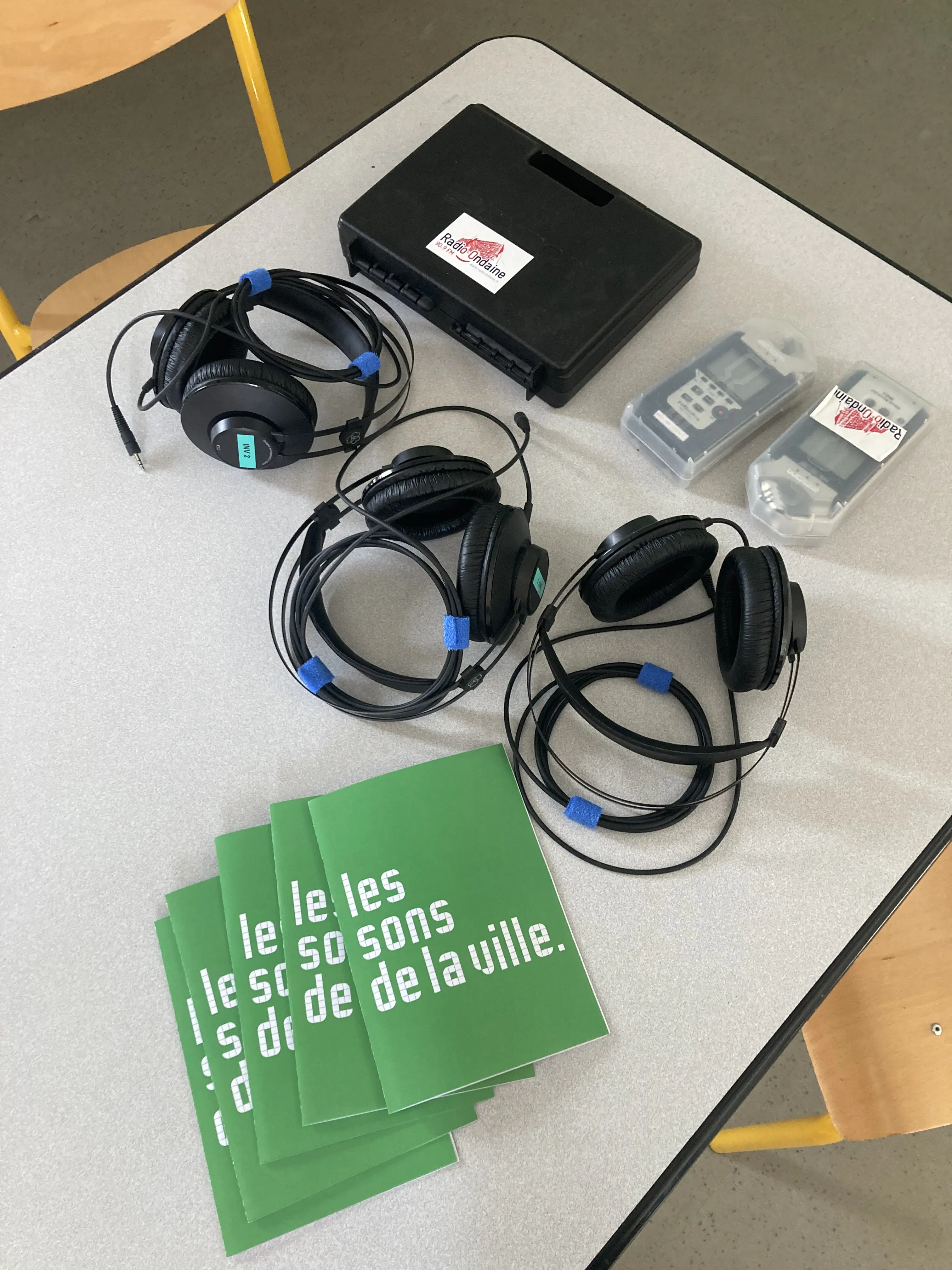Street of Transitions, metabolism of an exhibition
Site Le Corbusier, 2024 (article in preparation)
Experimentation was at the heart of our working process. It was important to us that this exhibition should include a performative dimension, allowing us to explore practices that are both environmentally friendly and conducive to the creation of social connections and collective action.
1. Immersion and participation of the inhabitants of Firminy.
To understand the history of this area and its cultural roots, we went through a phase of documentation and meetings with local people. First, we went to the town archives, where we discovered a collection of postcards from the early 20th century illustrating Firminy and its infrastructure before the modern era. Based on this collection, we ran a memory-gathering workshop with the residents of the Le Mail nursing home. These postcards, along with quotes from the workshop, can be seen in the first room of the exhibition. In partnership with Radio Ondaine, six children from the Firminy Children's Leisure Centre also took part in the project. During a workshop, they were given the opportunity to record the sounds of Firminy today. These recordings were then mixed in the last room of the exhibition to create the sounds of the city of tomorrow.
Teaser de l'exposition, crédits : Marion Joubert vidéos.
2. Participation of exhibition visitors.
The ‘Transition Town’ social movement is placing the question of democratic initiatives and local experimentation at the heart of the exhibition. In the same way, it was crucial that the exhibition should not be ‘top-down’ in relation to visitors, but should instead encourage their participation and the construction of new imaginations. It is therefore an exhibition in constant evolution, enriched by the participation of each visitor.

Extract from visitors' contributions.
3. Reuse and end-of-life of scenographic objects.
In order to limit our impact in a world of limited resources, we have taken the following steps: lending equipment, re-using materials and pooling purchases. For example, each object in the scenography has a story to tell, whether it's the swimming pool lockers from a closed swimming pool in Brittany, the grids for the text panels from the waste from the technical control room, or the agricultural crates for the vegetable garden, the purchase of which is shared with the Firminy agricultural control room. For this exhibition, we have sought to work as part of a network, mobilising local businesses, associations and city services.
Image 1: memorial collection, image 2: building the vegetable garden with the Firminy agricultural board, image 3: view of the workshop held in partnership with Radio Ondaine.
Design:
Caroline Manowicz and Costanza Matteucci.
Thanks to our partners: La maison de retraite du Mail, Radio Ondaine, le Centre de Loisirs (CLE) de Firminy-Vert, les Archives de la Ville, la Régie Agricole, la Régie Technique, La Turbine Créative.
Commanditaire : Site Le Corbusier


